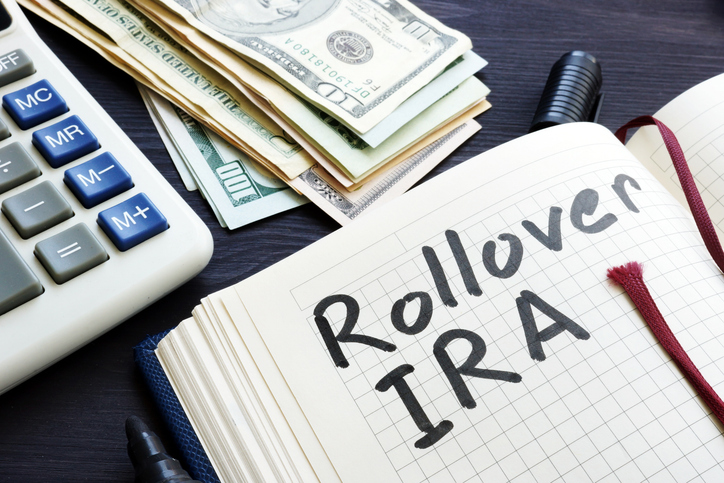If you have ever changed jobs or you have already started saving for retirement, you have likely encountered both Traditional IRAs and Rollover IRAs. However, these two similar-sounding accounts can play very different roles in your financial future. Knowing how each works can mean the difference between maximizing your tax advantages and making costly mistakes. Whether you want to continue growing your old 401(k) or build new retirement savings from scratch, understanding these IRA options is key to keeping your money working smarter, not harder, for the years ahead.
How a Traditional IRA Works
A traditional IRA (individual retirement account) is a tax-advantaged investment account that helps you save for retirement. It allows you to contribute pre-tax income, meaning the money you put in may be tax-deductible in the year you make the contribution. The account then grows tax-deferred, which means you will not pay taxes on investment gains, dividends or interest until you start making withdrawals in retirement.
This structure encourages long-term savings by reducing your taxable income and deferring taxes until your retirement years, when you may fall in a lower tax bracket.
Regardless, all earnings remain untaxed until withdrawal. This allows your balance to compound faster over time, compared to a taxable account where annual taxes may lower your earnings.
When you eventually take distributions, typically after age 59½, those withdrawals are taxed as ordinary income. It is important to remember that IRA withdrawals before age 59½ generally trigger both income taxes and a 10% early withdrawal penalty. However, some exceptions do apply for certain situations, such as first-time home purchases or qualified education expenses.
How a Rollover IRA Works

A rollover IRA is used to transfer funds from an employer-sponsored plan, such as a 401(k), 403(b) or 457(b), into a traditional IRA without triggering taxes or penalties. This typically happens when you leave a job, retire or want more control over your retirement investments. The rollover preserves the tax-deferred status of your savings, allowing your money to continue growing without immediate tax consequences.
You can move your funds in one of two ways: a direct rollover or indirect rollover.
- Direct rollover. In a direct rollover, your employer sends the funds straight to your new IRA custodian, ensuring a seamless, tax-free transfer.
- Indirect rollover. In an indirect rollover, you receive the funds in full, and then you have 60 days to deposit it all into an IRA. If you miss that deadline or fail to redeposit the full sum, the IRS treats it as a taxable withdrawal. This means you can face income taxes, as well as a 10% penalty if you are under 59½.
Rolling over your 401(k) or a similar plan makes sense if you want to consolidate old accounts, lower investment fees or gain more investment freedom. However, it is important to compare your old plan’s costs, features and potential creditor protections before moving funds. Some employer plans offer low-cost institutional funds or loan provisions that IRAs do not.
Consulting a financial advisor can help you weigh the pros and cons based on your personal goals and tax situation.
Key Differences of Traditional vs. Rollover IRAs
At first glance, traditional and rollover IRAs look nearly identical as they both offer tax-deferred growth. They also follow the same rules for contributions, withdrawals and required minimum distributions. However, the key difference lies in the account’s funding and the purpose it serves within your broader retirement strategy.
A traditional IRA typically uses funds from annual contributions you make directly using earned income. These contributions may be tax-deductible, depending on your income level and whether you have coverage from a workplace retirement plan.
In contrast, a rollover IRA holds funds transferred from an employer-sponsored retirement account, such as a 401(k) or 403(b). The rollover process moves your existing retirement savings without counting as a new contribution or creating a taxable event.
A traditional IRA offers full control over how you invest your new contributions. A rollover IRA also offers that flexibility for funds moved from an old workplace plan. However, a rollover allows you to move from the limited investment selection of an employer plan to a broader selection of stocks, bonds, mutual funds and ETFs. Once rolled over, your investments are no longer tied to your former employer’s plan administrator.
Both traditional and rollover IRAs are taxed the same way. Withdrawals in retirement are treated as ordinary income, and early withdrawals may trigger penalties.
However, a rollover IRA has an additional consideration. If you later roll those funds into another employer plan, such as a new 401(k), you will find the process is much easier when you move funds from a separate rollover account. Keeping your accounts distinct helps avoid complications if you ever convert part of your IRA to a Roth IRA.
How to Rollover an IRA to Your Current Traditional IRA
There are two main ways to move your IRA funds: a direct transfer or an indirect rollover.
- Direct transfer. A direct transfer, also called a trustee-to-trustee transfer, sends the money straight from your old IRA custodian to your current traditional IRA. Because you never take possession of the funds, it is completely tax-free, helping you avoid any risk of penalties.
- Indirect rollover. An indirect rollover, on the other hand, gives you the funds first and requires you to deposit them into your new IRA within 60 days. Missing that deadline can trigger income taxes and a 10% early withdrawal penalty if you’re under 59½.
The IRS allows only one indirect IRA rollover per 12-month period across all your IRAs. However, this rule does not apply to direct transfers, which can be done as often as you would like. Keeping your transfers direct is the easiest way to stay compliant and avoid unnecessary tax complications.
Bottom Line

Both traditional IRAs and rollover IRAs offer powerful tax-deferred growth opportunities, but they serve different purposes in your retirement plan. A traditional IRA is best for ongoing contributions that reduce your current taxable income. Meanwhile, a rollover IRA helps you preserve and manage funds from an old employer plan without losing tax advantages. Understanding how each works, and when to use them, can help you make smarter decisions about consolidating accounts, minimizing taxes and optimizing investment flexibility.
Tips for Investing
- A financial advisor can help you with managing your portfolio and choosing the right assets for your long-term growth. Finding a financial advisor doesn’t have to be hard. SmartAsset’s free tool matches you with vetted financial advisors who serve your area, and you can have a free introductory call with your advisor matches to decide which one you feel is right for you. If you’re ready to find an advisor who can help you achieve your financial goals, get started now.
- An investment calculator can help you estimate how your portfolio might grow over time, based on your choices.
Photo credit: ©iStock.com/designer491, ©iStock.com/designer491, ©iStock.com/Maks_Lab
Read the full article here
















